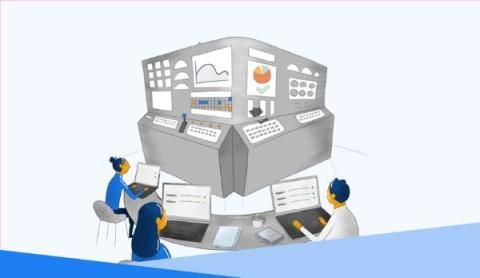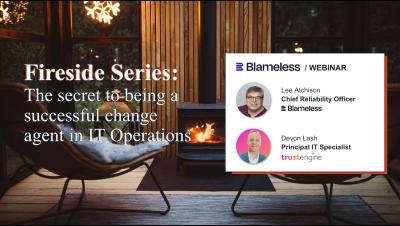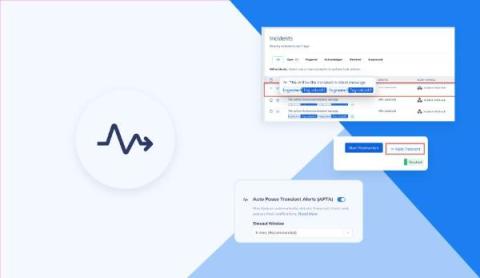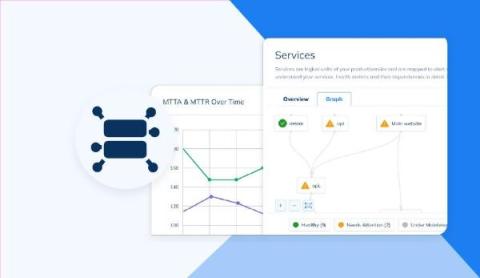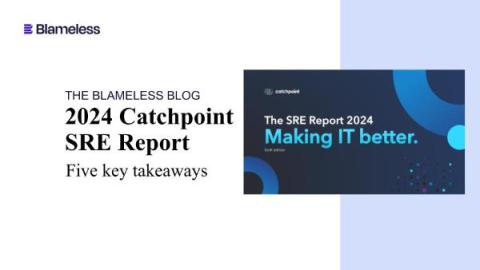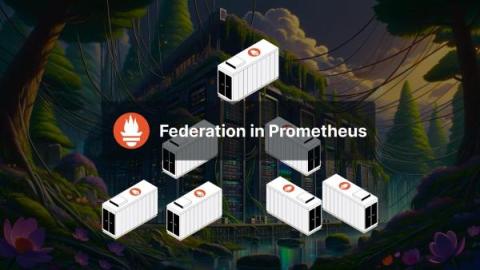Operations | Monitoring | ITSM | DevOps | Cloud
January 2024
Enhancing Service Reliability: Uniting Rootly's Incident Management and Backstage's Software Catalog
Chaos To Control: Incident Management Process, Best Practices And Steps
The Pulse Of Technology: Why IT Monitoring Is Non-Negotiable In 2024
Fireside Series: The secret to being a successful change agent in IT Operations
System Reliability Metrics: A Comparative Guide to MTTR, MTBF, MTTD, and MTTF
Reliability At Your Fingertips | Squadcast
How Organizations Hire SRE's- Laterals or Internal?
Role of Human Oversight in AI-Driven Incident Management and SRE
Blameless CommsAssist - 3 Tips on Making Incident Communication Easy
How Squadcast Helps With Flapping Alerts
Simplifying Service Dependency With Squadcast's Service Graph
Understanding Cardinality with Levitate's Cardinality Explorer
Does Every Incident Need a Retrospective? Here's What the Experts Have to Say
Every quarter, we host a roundtable discussion centered around the challenges encountered by incident responders at the world’s leading organizations. These discussions are lightly facilitated and vendor-agnostic, with a carefully curated group of experts. Everyone brings their own unique perspective and experience to the group as we dive deep into the real-world challenges incident responders are facing today.
From Amazon to Apple: Key Strategies for Operational Excellence in Tech
8 Strategies for Reducing Alert Fatigue
Site Reliability Engineers (SREs) and DevOps teams often deal with alert fatigue. It's like when you get too alert that it's hard to keep up, making it tougher to respond quickly and adding extra stress to the current responsibilities. According to a study, 62% of participants noted that alert fatigue played a role in employee turnover, while 60% reported that it resulted in internal conflicts within their organization.
The Catchpoint 2024 SRE Report - Five Key Takeaways
Non-Abstract Large System Design (NALSD): The Ultimate Guide
Non-Abstract Large System Design (NALSD) is an approach where intricate systems are crafted with precision and purpose. It holds particular importance for Site Reliability Engineers (SREs) due to its inherent alignment with the core principles and goals of SRE practices. It improves the reliability of systems, allows for scalable architectures, optimizes performance, encourages fault tolerance, streamlines the processes of monitoring and debugging, and enables efficient incident response.
Prometheus Federation Scaling Prometheus Guide
SLOs with Prometheus done wrong, wrong, wrong, wrong, then right
Introducing Squadcast's Intelligent Alert Grouping and Snooze Notifications
The SRE Report 2024 Reveals State of Site Reliability Engineering
The SRE Report 2024: Essential Considerations for Readers
If you Google, “What is the shortest, complete sentence in American English?”, then you may get, “I am” as the first answer. However, “Go” is also considered a grammatically correct sentence, and is shorter than, “I am”.
How Squadcast's Workflows Enhance Incident Management Automation?
How to Calculate and Minimize Downtime Costs
Downtime is an unwelcome reality. But, beyond the immediate disruption, outages carry a significant financial burden, impacting revenue, customer satisfaction, and brand reputation. For SREs and IT professionals, understanding the cost of downtime is crucial to mitigating its impact and building a more resilient infrastructure.


